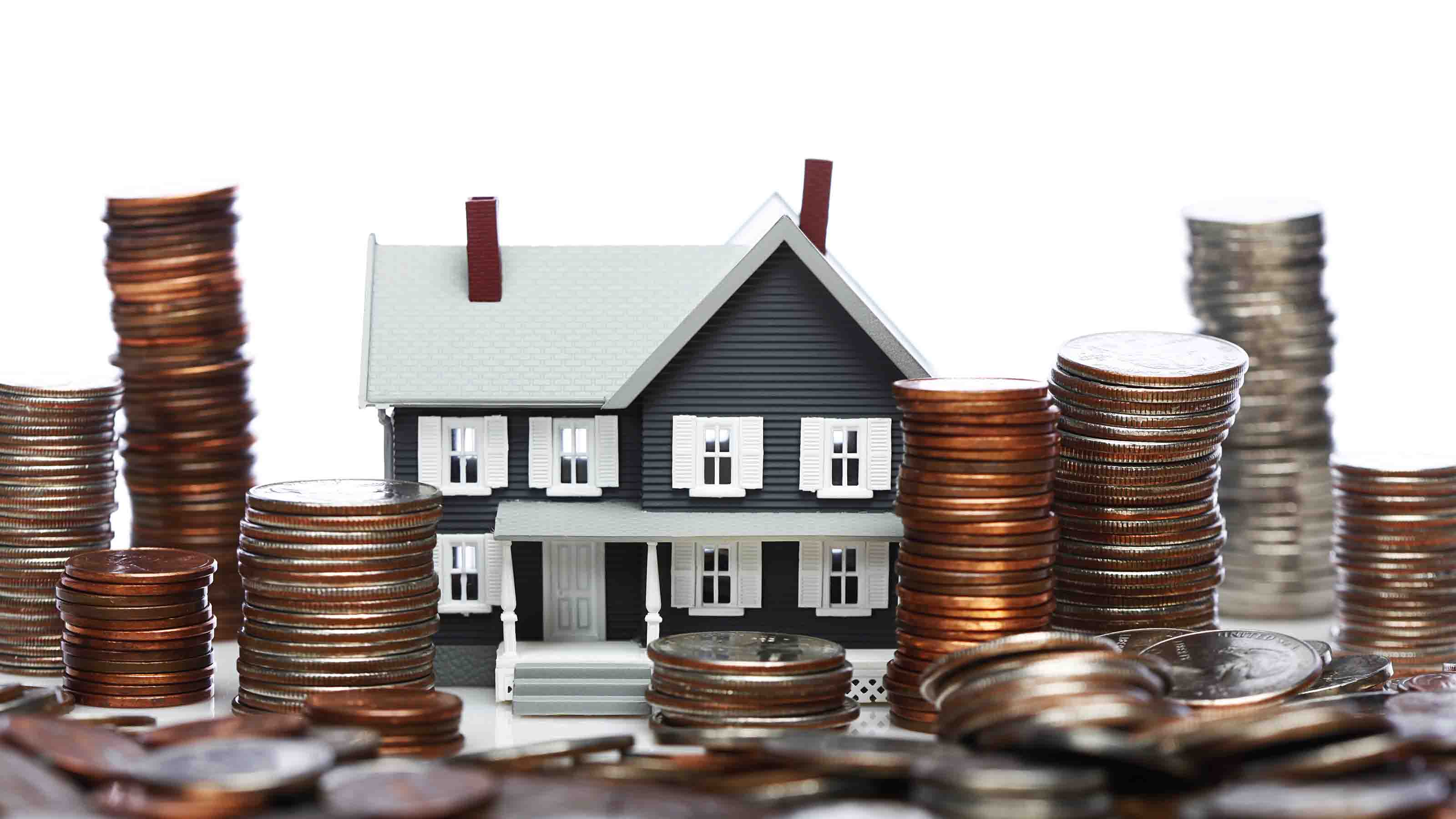Restoring Historic Homes: A Primer
With home prices at historic highs and tax incentives for restorations available, fixing up a fixer-upper might be worth considering. But look before you leap.

Mark Hood of Bowling Green, Ky., has been restoring old homes since he was 19. For him, there is nothing more rewarding than doing the work with his own hands then seeing the fruits of his labors. But if there's one thing Hood has learned over the last 30 years from working on at least 20 historic properties, it's this: Be careful. There are important do's and dont's to restoring old homes that will mean the difference between a labor of love -- or floundering in a money pit.
An old home can be a bargain -- sometimes even after paying for a total overhaul. In fact, some historic homes are a downright steal. For example, the Housing & Redevelopment Authority in Lynchburg, Va., has a homesteading program that allows people to buy a dilapidated, historic home for only $1. The catch? You must renovate it and live in it for at least five years.
Another attraction: state and local government tax incentives. About half of the states offer tax credits for restoring historic properties. And plenty of cities have tax abatement or moratoriums on old homes that are brought back to life. Although it's not that easy to qualify for these tax incentives and the amount you receive might not amount to much, you don't get such deals when buying a new house.

Sign up for Kiplinger’s Free E-Newsletters
Profit and prosper with the best of expert advice on investing, taxes, retirement, personal finance and more - straight to your e-mail.
Profit and prosper with the best of expert advice - straight to your e-mail.
Still, caution must be applied to every step of the process, from buying the home to repairing or renovating it to applying for tax relief. Rush into buying an old house without bringing in an inspector, structural engineer or a contractor who can give you an idea how much it will cost to make all those fixes, and you could end up with a costly mistake. Likewise, move too fast to start restoring your historic home without learning its history, getting the proper permits and certifications, and applying the necessary rehabilitation standards, and you might find yourself with a home makeover that doesn't match the original character of the property, lands you in hot water with the local historical board or doesn't qualify for those tax credits you were counting on.
For the last few weeks, with May as National Preservation Month, we've shown you historic home makeovers across the nation -- from the Northeast to the Southeast and Midwest and finally to the West. Maybe you've been inspired by the transformations shown in our slide shows and are ready to find your own fixer-upper. Before you make the leap, though, remember Hood's warning to go cautiously.
How to buy an old house
Buyers weren't exactly flocking to the 1905 Queen Anne home Marjorie Ellena now owns in Richmond,Va. Perhaps it was the large hole left by a bus that had driven through an exterior wall that was scaring people off -- but not Ellena. There was something about the house that captured her and helped her look past the gaping hole.
"You go after what you like," Ellena says about historic properties, even those that might frighten away most buyers. "It's the call of the old house."
Scot Hinson's House: Before
That sentiment must run in the family because her younger brother, Scot Hinson, bought a falling-down house in Savannah, Ga., that had nothing of the interior intact, Ellena says.
Ellena admits it does take a certain person to buy an old house. And it takes a certain type of realtor to help such people in their search. She says she met with resistance and confusion when she went to a realtor's office looking for an old home.
So she and her mother, Sharon Hinson, decided to create a Web site, Historic Properties, to help other historic-home enthusiasts answer the call of the old house.
Historic Properties has a database of historic homes (and commercial properties) that are at least 50 years old for sale in the United States and abroad. You can search by architectural style, region, price, type and condition.
Created in 1999, the site now has more than 850 listings, ranging in price from $1 to $18 million and in all states of condition from shells to fully restored mansions.
Ellena says there has been a lot of demand for historic homes, especially in the last couple of years as awareness of the value of these properties has increased and as telecommuting has allowed people to move to where the homes -- not the jobs -- are. Her Web site gets 150,000 visitors each month.
PreservationDirectory.com also lists historic homes and real estate for sale in the U.S. and Canada. Listings are by region. The site also offers an architectural style guide, preservation book store and a directory of national and local preservation organizations.
Buying an old house, says Ken Holmes, founder of The Old House Web and restorer of old homes, isn't any different from buying any piece of real estate. There are do's and dont's any buyer should follow. With an old house, though, sometimes you have to consider things you might not have to worry about with a new home:
Buying do's
- Ask a contractor to accompany you as you look at old homes to get a price estimate of the work that needs to be done, suggests Ellena.
- Make the contract contingent on a home inspection, and the inspector should be someone versed in older homes -- perhaps even a structural engineer.
- Consider costs of hidden problems such as lead paint, asbestos and mold, which might need to be abated at a considerable expense.
- First-time buyers and do-it-yourselfers should consider houses with just cosmetic problems (peeling paint, ugly wallpaper), not ones in need of a major overhaul, Holmes writes on his Web site.
Dont's
- Don't buy a house with major structural problems. This seems like a no-brainer, but sometimes an emotional attachment to a beautiful old house can make you think no problem is too big. But Ellena warns that it's not feasible to fix some structural problems.
- Don't buy a good house in a horrible neighborhood, Holmes says. It's not worth it to put money making a house nice if the neighborhood never will be. Look for fixer-uppers in good neighborhoods. That's where the bargains are.
- Don't get into a situation where you are mortgaging yourself down to the last dollar, Holmes says. If you know the house needs work, you want to be realistic about what you can afford.
Preserving, rehabilitating and restoring
When Hood bought his 1887 Victorian house six years ago in Bowling Green, Ky., he said he didn't realize it was in a historic district. While gutting the interior of house down to the wall studs, he got a visit from the city's historical planner asking what he was doing. Luckily for him, Hood hadn't violated any of the city's historical preservation standards.
Now, says Hood, who is vice-chairman of the city's historic preservation board and owner of Hood Interior and Exterior, property owners must apply for and receive a Certificate of Appropriateness before making any exterior changes to a building in a historical district. You won't be able to get a building permit until you have that COA. Plus, you have to pay $75 to put a notice in the local newspaper if you're planning on making any changes to a historic home.
Before you start working on an old house, consider these do's and dont's:
Do's
- Call your local or state historic preservation office before making any changes to find out if your home is in a historic district and whether you must follow any guidelines. Most states and localities require you to follow the Standards for Rehabilitation of Historic Buildings, published by the Secretary of the Interior, if your property is in a historic district. These ten rules focus on retaining the historic character of the property by repairing rather than replacing. The standards also are used to determine whether a property qualifies for a federal tax credit -- and usually for state and local credits. The guidelines for applying the standards give examples of what is recommended and not recommended when working on a historic home.
- Live with the house a while before getting involved in big projects, Holmes says. When you learn about the house first, there's a better chance you'll be happy with the work you have done.
- Try to maintain the original character of the house. After all, that's what restoration is all about.
- Find a contractor who has experience working on older homes by getting recommendations from other historic-home owners, your city's historic preservation board, homebuilders association or contractor licensing board. Some states, such as Kentucky where Hood is, even have a directory of builders who work on historic homes. Before hiring a contractor, check out his past work and make sure he is licensed and insured. The Old House Web has tips on finding a contractor.
- Do add 20% to 25% on top of a contractor's bid for unexpected problems during the renovation and special orders, Hood says. He gives his customers a high-end and low-end bid because he says old houses can have hidden problems that don't surface until restoration work is underway.
Dont's
- Don't pay for a job before it's done. Structure the payments so a sizeable amount is due upon satisfactory completion.
- Don't assume having features custom-made is more expensive than buying them straight off the shelf at Lowe's or Home Depot. You may be surprised. Ellena says when she had to replace wood trim in a hallway of her 1905 home, she had to have it custom milled -- and it cost less than if she had bought it in a store.
- Don't assume you'll have to replace all those drafty old windows with expensive new ones that don't fit the character of the house. A little caulk can go a long way -- and it's easy to use.
- Don't rush to rip off plaster walls if you have to replace a house's wiring. Holmes says electricians can snake wires through the walls instead. By doing this, you'll avoid a huge mess and help maintain the original character of the house.
Holmes Web site, The Old House Web, provides tons of how-to advice for restoring old homes, a guide to suppliers, design ideas and forums where ideas and information are exchanged. The site also has a list ofestimated repair costs, from sanding floors to replacing a roof.
Tax incentives
For two years, Kim and David Jones worked to bring a 130-year-old condemned Italiante house in Bowling Green, Ky., back to life. They spent at least $140,000 converting the property, which had been divided into apartments, back to a single-family home. Because their home was in one of the city's historic districts, they got the necessary approval for all exterior work they did because the local historic preservation board has strict standards for maintaining the character of a historic home.
Even though they were careful, the Joneses made a decision that cost them a valuable tax credit: While working on the interior, they decided to leave the brick exposed in the foyer after the plaster fell off the wall as they were tearing off and rebuilding a staircase. No restoration, no tax credit.
Since January 2005, Kentucky has been offering homeowners who spend at least $20,000 restoring a historic house a tax credit worth 30% of their total expenditures (capped at $60,000). To get the credit, you have to show before and after pictures and adhere to the U.S. Secretary of Interior's rehabilitation standards, which Joneses didn't realize applied to the interior of a home, too.
"We were told an Italianate house would not have exposed brick in the foyer," Kim Jones says. "Because of that, we didn't get one penny (of the tax credit) ... It was a slap in the face."
The lesson here is obvious: If you hope to take advantage of a tax incentive, check with your local or state preservation board before doing anything, Kim says.
Homeowners hoping to get a tax break for fixing up a historic home should look to their state or city, not the federal government. That's because the Federal Historic Preservation Tax Incentives program provides incentives for rehabilitating income-generating historic properties such as offices, rental housing, and retail stores -- not private homes.
But be warned: In many states, funding for tax credits is limited. Kentucky has a $3 million annual program cap. Louisiana provides only $1 million in annual funding for its tax credit program.
There's another catch: The tax credits are worth less than face value when federal taxes are taken into consideration, according to NTHP. When considering the in-your-pocket value of the state credit, remember that reducing the amount of state taxes you pay reduces your federal tax deduction for state taxes paid -- cutting the value of the credit by as much as 35% if you're in a high income-tax bracket. Also, a state tax credit can trigger a short-term capital gain, which can be taxed up to 35%. All in all, the typical after-tax value of state tax credit is about 55 cents on the dollar, according to NTHP.
Scot Hinson's House: After
Check with your city's historic preservation board, though, because you might find you are entitled to a city tax abatement or moratorium. Ellena says Richmond, Va., abates the real estate taxes over ten years on houses 15 years or older that have been improved in value by at least $20,000.
Worth it? Well, take a look at Ellena's brother's labor of love in Savannah and decide for yourself.
States with tax credits
The following states offer tax credits for restoring historic homes:
Colorado, Connecticut, Delaware, Georgia, Indiana, Iowa, Kansas, Kentucky, Louisiana, Maine, Maryland, Massachusetts, Michigan, Missouri, Montana, New Mexico, North Carolina, North Dakota, Oklahoma, Rhode Island, South Dakota, Utah, Vermont, Virginia, West Virginia and Wisconsin.
Get Kiplinger Today newsletter — free
Profit and prosper with the best of Kiplinger's advice on investing, taxes, retirement, personal finance and much more. Delivered daily. Enter your email in the box and click Sign Me Up.

Award-winning journalist, speaker, family finance expert, and author of Mom and Dad, We Need to Talk.
Cameron Huddleston wrote the daily "Kip Tips" column for Kiplinger.com. She joined Kiplinger in 2001 after graduating from American University with an MA in economic journalism.
-
 Stock Market Today: Trump Retreats, Markets Rejoice
Stock Market Today: Trump Retreats, Markets RejoiceStocks rally, yields soften, the dollar rises, and even beaten-down names enjoy the wages of potential trade peace.
By David Dittman
-
 In Trump’s Economy Should 401(k) Savers 'Set It and Forget It?'
In Trump’s Economy Should 401(k) Savers 'Set It and Forget It?'It’s hard to bury your head in the sand when the markets are volatile. Here’s when it makes sense and when it doesn’t.
By Donna Fuscaldo
-
 How to Search For Foreclosures Near You: Best Websites for Listings
How to Search For Foreclosures Near You: Best Websites for ListingsMaking Your Money Last Searching for a foreclosed home? These top-rated foreclosure websites — including free, paid and government options — can help you find listings near you.
By Bob Niedt
-
 Luxury Home Prices Rise as the Rich Dodge High Mortgage Rates
Luxury Home Prices Rise as the Rich Dodge High Mortgage RatesLuxury home prices rose 9% to the highest third-quarter level on record, Redfin reports, growing nearly three times faster than non-luxury prices.
By Kathryn Pomroy
-
 Four Tips for Renting Out Your Home on Airbnb
Four Tips for Renting Out Your Home on Airbnbreal estate Here's what you should know before listing your home on Airbnb.
By Miriam Cross
-
 Five Ways to Shop for a Low Mortgage Rate
Five Ways to Shop for a Low Mortgage RateBecoming a Homeowner Mortgage rates are high this year, but you can still find an affordable loan with these tips.
By Daniel Bortz
-
 Looking to Relocate? Plan for Climate Change
Looking to Relocate? Plan for Climate Changebuying a home Extreme weather events are on the rise. If you’re moving, make sure your new home is protected from climate change disasters.
By Rivan V. Stinson
-
 Retirees, A Healthy Condo Has a Flush Reserve Fund
Retirees, A Healthy Condo Has a Flush Reserve FundSmart Buying Reserve funds for a third of homeowner and condo associations have insufficient cash, experts say. Here are some cautionary steps you should take.
By Patricia Mertz Esswein
-
 Cash Home Buyers: New Services Offer Help Making All-Cash Offers
Cash Home Buyers: New Services Offer Help Making All-Cash OffersBecoming a Homeowner Some firms help home buyers make all-cash offers on homes. Weigh the fees before you sign on.
By Emma Patch
-
 Home Sale Prices in the 50 Largest Metro Areas
Home Sale Prices in the 50 Largest Metro AreasBecoming a Homeowner What’s happening in the market where you live?
By the editors of Kiplinger's Personal Finance